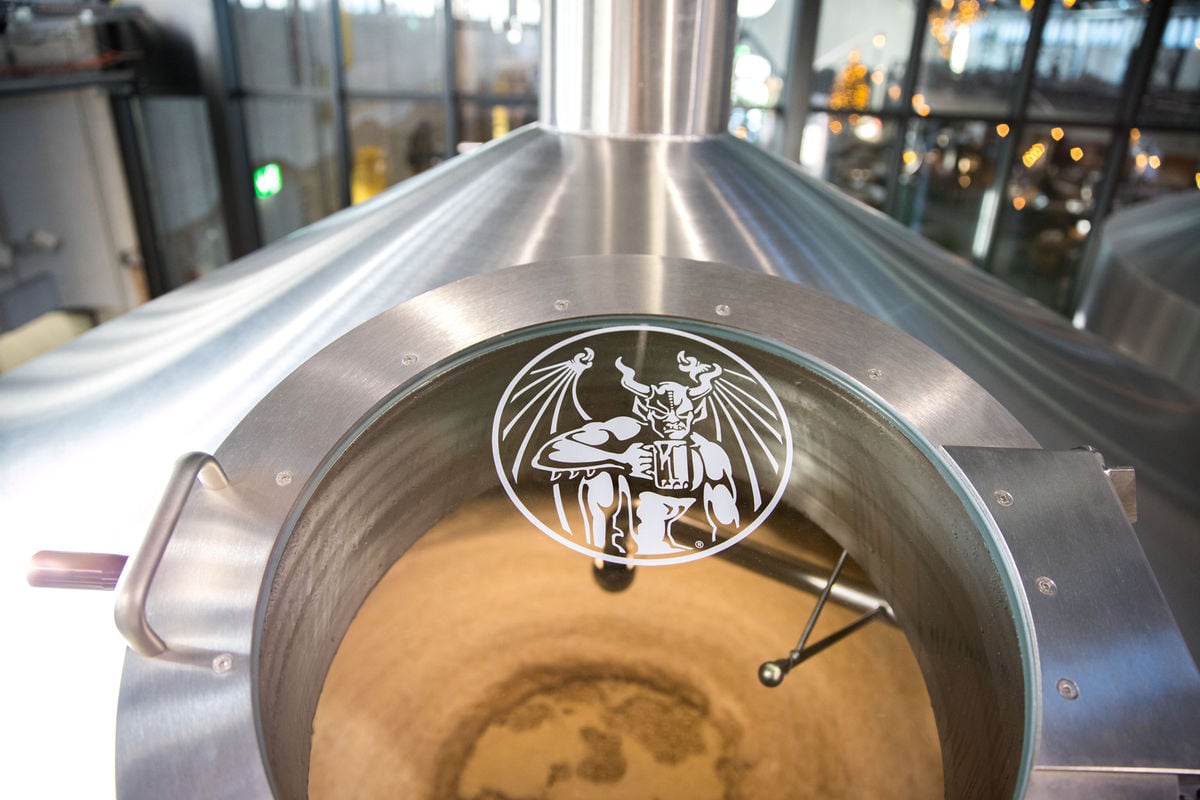Start 14-Day Trial Subscription
*No credit card required

A Talk With Thomas Tyrell, Brewmaster at Stone Brewing Berlin
Recently, I had the opportunity to visit the first U.S. craft brewery to expand into Europe, Stone Brewing Berlin. Brewmaster Thomas Tyrell took me on a personal tour, and we talked about the brewery’s impressive progress in just two years after opening. He shared his perspective on the challenges of brewing Stone's signature beers nearly 6,000 miles from California, including how the recipes differ, and described efforts to introduce Stone's unique and flavorful brews in a culture where tradition reigns.
A few years back, the guys at Stone Brewing Co. sat around a conference room table discussing the problems of shipping beer from California to Europe. Shipping costs were astronomical, and the beer sometimes arrived in less than optimal condition. The discussion sparked a radical scheme in the mind of Stone's Greg Koch. Why not open a Stone brewery in Europe?
In July of 2014, Stone unveiled plans for Stone Brewing Berlin - an impressive facility now housed in a former gasworks plant that was constructed in 1901 just outside central Berlin. The new brewery encompasses a 10-hectoliter brewhouse, beer canning hall, Stone World Bistro & Gardens and a retail outlet. The brewery jumped into full production near the end of 2015, with kegs and cans of Stone IPA and Arrogant Bastard heading out to a few destinations across Europe.
Stone Berlin now supplies a range of craft beer styles to over 20 countries around Europe, including Germany, Switzerland, Austria, the United Kingdom, Ireland, the Netherlands, Belgium, Sweden, Iceland, Norway, Denmark, Finland, France, Spain, Italy, Poland, Latvia, Estonia, Lithuania and Russia.
With Stone's focus on bringing American-inspired craft beers to European drinkers, it seemed logical to hire a German brewmaster. As Stone Berlin's Director of Brewing Operations, Thomas Tyrell holds a doctorate in brewing science and oversees all aspects of production, including brewing and packaging, production scheduling, sourcing ingredients and materials, maintenance and beer quality.
BC: How did you become a brewer?
Tyrell: I was 15 or 16 and didn’t want to go to school anymore – I hated school. At that time in Germany, you could do an apprenticeship in school and get hired by a company for a low salary for a couple of days a week to work and learn a profession over three years. I found a book with all these different professions in alphabetical order. When I got to the "B" section, I saw "brewer." That was it. The decision was made. I wouldn’t say it was a well-thought-out decision, but I'm still pretty happy with it.
BC: What were your brewing experiences before Stone?
Tyrell: I did an apprenticeship with Pott’s Brauerei in Germany, where I completed my training as a brewer in 1994. I also brewed in the mid-90s at Saxer Brewing in Portland, Oregon, and then worked at a small brewpub in Germany, a pub brewery chain in Spain, studied at a technical university to get an engineering degree, and afterward, just before Stone, I worked at Berlin's VLB Institute for Research & Teaching in Brewing.
BC: What led to meeting Greg Koch and coming to work for Stone Berlin?
Tyrell: The VLB Institute was invited to the announcement of the Berlin Stone site, but nobody knew what was going on with this, so nobody wanted to go. I volunteered to go and got to see the original building when it was empty. Greg Koch literally dropped a stone during his announcement. I realized this was going to be something big, and I was excited about it. Greg and I had a discussion about a job, and I started a half-year later – building everything and putting together our beautiful brewery.

Stone's familiar gargoyle logo rests atop a fermentation tank full of Stone beer brewed in Berlin. Stone Berlin often uses different hop varietals to appeal to European drinkers, such as Hallertau Mittlefruh hops in Stone Go To IPA.
BC: What do you feel is the biggest challenge to selling American-style craft beer in Germany?
Tyrell: So many supermarkets here stock the same limited range of beers. They might have 30 different types of Pilsner, but no IPAs, and not even an Altbier or Kölsch. There is even no Berliner Weisse in Berlin, and two-thirds of the population doesn't even know what Berliner Weisse is. This is a bit sad, but it seems to be changing. A lot more bottle shops are opening, and some supermarkets are doing specialty beer shelves. We are also observing niche craft beer bars popping up around Germany with more than just two or three beers on tap.
BC: With so many people in Germany holding traditional attitudes about beer, has it been difficult convincing conventional German beer drinkers to come to Stone and embrace the beer?
Tyrell: I think most of the people who come here to our restaurant are curious about the project and have traveled a bit, because we are somewhat on the outskirts of Berlin and not in the city center. But the majority of people who come here are not worried about beer, they just see this as an exciting restaurant to try out. They might come for the first time and ask for something close to Pilsner. This is a bit challenging for our waiters, and then a discussion starts. There are a lot of people in the region who love this place and come over and over, but some Germans come once and just don't like the beer. Maybe they need a year or two to think about it and develop an acquired taste.



